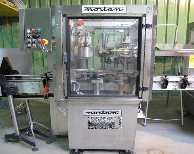

It also not only allows you to mark your favorites, but it also has a way for you to see (or instantly run from Photoshop) your most recently used conversions. It also features a handy search feature so you can get to your preset quickly (which none of the other products offer). It features nice interactive previews of what your image would look with its large number of presets. This is a slick looking user-interface that can be run standalone or as a plug-in in your Apple or Adobe favorite product. I go into more depth on my reviews than I will here. Click the images to see a larger version of the screen shot, and click the links under the images to see my current review for each product. I’ll begin this review with a little run down on the user interfaces of each product.

I examined them as prints to draw my final conclusions, but in all cases my opinion of the display version mirrored my opinion of the print. To help me in this process, I also printed all of the images I did during my testing (which is more than you see here in this article) on my Canon iPF6450 and Canon PRO-1 printers to see which result I preferred when viewed inside a lightbox. With that in mind, that’s how I approached this – I wanted to see what’s the best result I could get using the features of the product like I’d really use them and see which of the three gave me the best result for a variety of images. Instead, I think that when you have a product you use it based on what’s easily accessible and you edit your image with subjective results based on how you are able to use the features within the product effectively. I don’t have the desire to do that because I don’t think that’s real. I have no doubt that if someone wanted to spend a couple days doing an analysis they could get all three products to produce identical results using the same image and mapping the values set by one to the others. I’m all about real world results, and I think this really measures what you can expect as I’m very familiar with all three products. Instead, I got this crazy idea to just edit some images the way I’d do them in real life using all three products, then compare the results. If that’s what you are looking for then I’m afraid I’m going to disappoint you. It’s got some impressive features and a wealth of presets, so I started to wonder myself – which one should I use?įor this Black & White showdown I decided to do a very unscientific comparison which I’m sure will piss off my anal retentive, OCD, engineer readers who are sticklers for scientific analysis. Finally onOne surprised everybody by tossing its hat into this now crowded space with Perfect B&W.

I’ve really been pleased with this product to the point that I find myself using it probably more than I should! It’s just very well done and it’s fast to get good results, so it’s tempting to fire it up and say “I wonder what this would look like in B&W”.

However, after a good first try Topaz Labs really upped its game with awesome follow up called B&W Effects 2. It’s a great product with gobs of control that allow you to dial in the results you want, where you want it.
#ON1 RESIZE 2017 VS. BLOW UP 3 PRO#
When it comes to black and white conversions, I’ll admit that I’m a Silver Efex Pro 2 fan boy.
#ON1 RESIZE 2017 VS. BLOW UP 3 SOFTWARE#
OnOne Software Perfect B&W, Nik Software Silver Efex, & Topaz B&W Effects


 0 kommentar(er)
0 kommentar(er)
